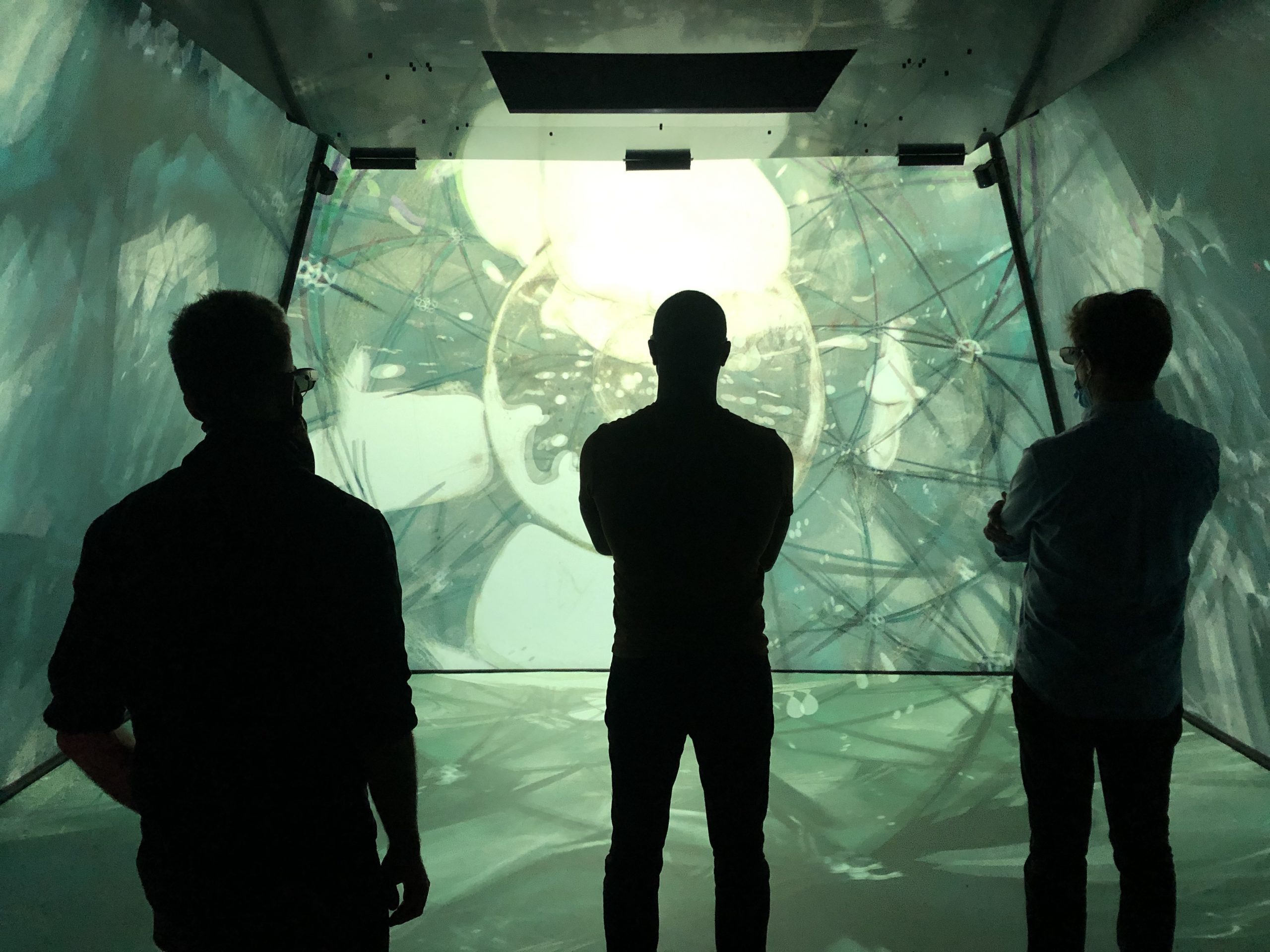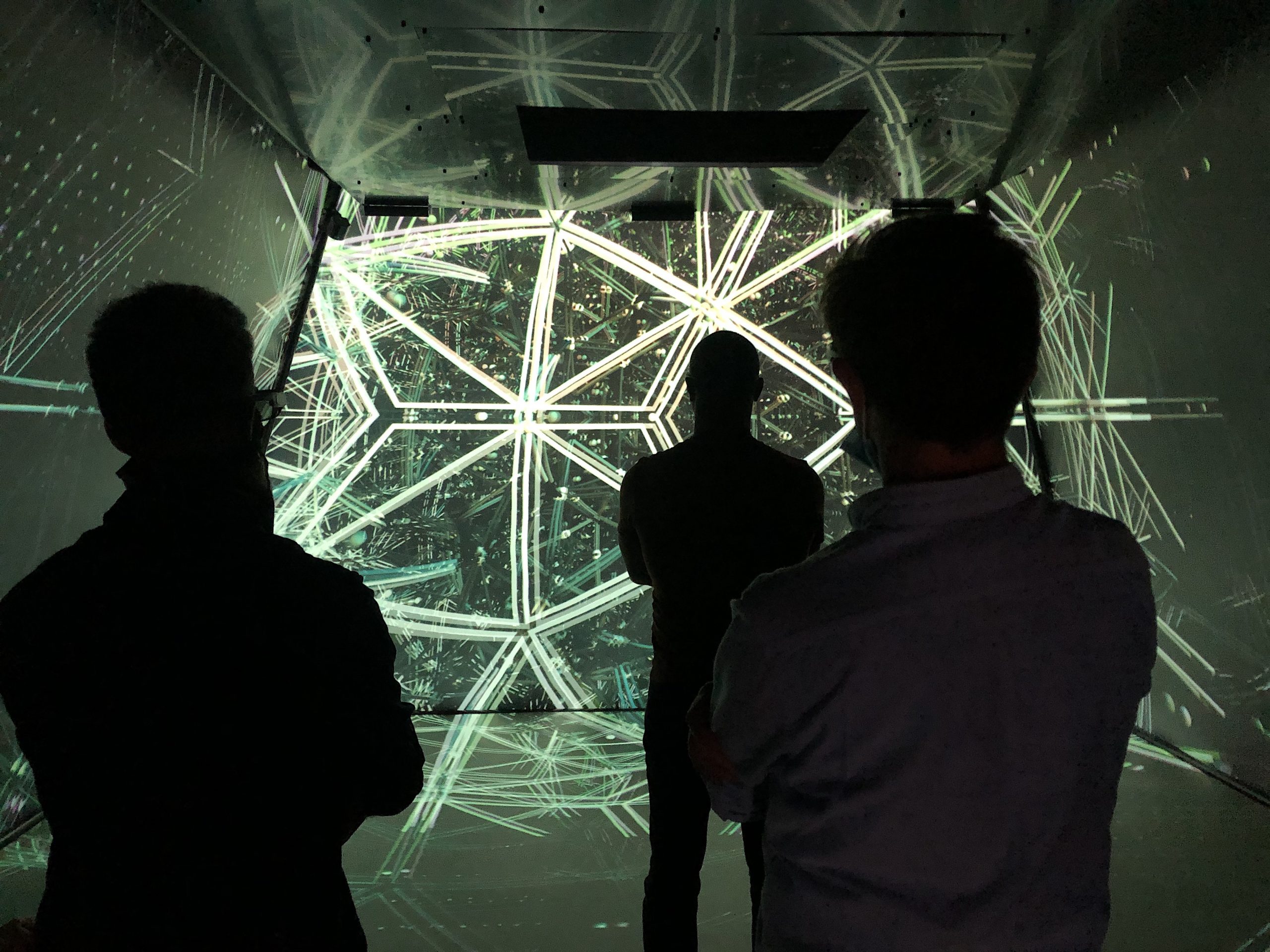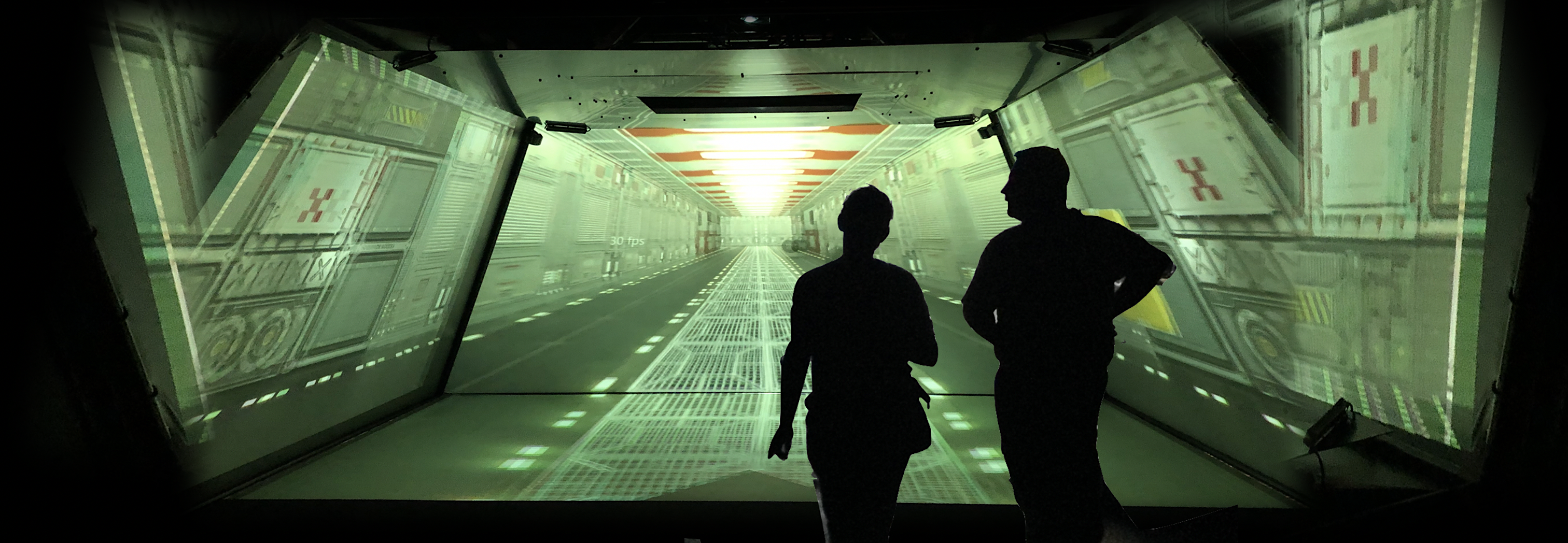MPM Chooses Digital Projection for Innovative CAVE at Leading French Research Centre
Manchester (UK), 27th April 2020 – Integration specialist MPM Equipement has chosen Digital Projection’s E-Vision Laser 10K for a temporary CAVE installation at one of the labs operated by CEA Tech – the technology research arm of the CEA (France’s Atomic Energy and Alternative Energy Commission).
Spanning over 3,300 sqm, the CEA’s Grenoble lab – known as Y.SPOT – is what is known as an open innovation centre, which is primarily used to develop a broad portfolio of technologies for ICT, energy, and healthcare, as well as disseminating new technologies for industry; effectively bridging the gap between the worlds of research and business. Through its work at Y.SPOT (which welcomes collaborations with industry, SMEs, students, architects, and designers), CEA Tech is also able to provide businesses with access to key enabling technologies, as well as those developed by other CEA operating divisions.
Much like CEA Tech, MPM Equipement is also used to working across a variety of fields, having started out with theatre, concert hall, and museum installations, then moving into conference halls, meeting rooms, sports MICE venues.
“We also help clients with the digitisation of their offering with new communication tools using BYOD (bring your own device) or automation,” said Nicolas Jeanselle, project manager at MPM Equipement. “We pride ourselves in being a specialist in all things audio-visual and work to make them all work and communicate together. CAVEs aren’t particularly our speciality, but this project is much more than just a CAVE.”
The installation – known as SIRCE (Smart Immersive Room for Circular-vision Experiment) – was designed by engineer and scenographer Frédéric Ravatin from CREATIME in the shape of three truncated pyramids, with a 5 sqm base (variable +/- 10% depending on the prototypes and configuration of the space). Inside, the ground and three of the faces serve as 3D-relief screens that can be used to recreate environments and objects, and even host video conferences in 3D.
Although the CAVE can accommodate up to 25 people, it is typically used by between five and 10. All visitors are invited to wear XPAND 3D active glasses in order to give the feeling of total immersion when stereoscopic content is projected on the four synchronous and aligned screens.
As the faces of SIRCE are tilted inwardly at an angle of 26°, significant perspective distortions can be induced and exaggerated in stereoscopy, making the virtual environment seem much larger than it actually is. In effect, the user is able feel as if they are looking ‘beyond’ the confines of the CAVE, recreating a larger world whose dimensions and space still appear ‘normal’ (a phenomenon known as ‘orthostereoscopy’).


Projecting Perception
“The project’s scenographer won the tender for the refurbishment of the CEA’s Y.SPOT, where the CAVE is installed,” said Jeanselle. “The idea was to create a virtual environment where any media and content could be shown in an immersive way.” MPM already worked in the past on a number of projects with Frédéric Ravatin, including Europe’s largest freshwater aquarium-vivarium museum, Aquatis, in Switzerland.
After an extensive testing period, MPM deduced that the only method that could be used to compensate for the deformations induced by tilted screens was to recreate the path that the light would take from the object under observation to the eyes of the spectator; simulating on the screens, to a pixel, where the light beam should pass if the spectator was really in that virtual environment.
As Jeanselle succinctly put it, “we are, in effect, projecting peoples’ perception.”
For each screen, the team placed two virtual cameras roughly where the viewer’s eyes would be (around 1.6m from the ground, in this case); one for the left eye, drawn in red, and one for the right eye, drawn in blue. Each of the four projection surfaces (left, front, right, and ground) required two cameras, giving a total of eight, grouped into four ‘rigs’ of two. The left and right cameras of each rig were 6.5cm apart (the average distance between human eyes) and perfectly parallel with no convergence.
“This information is recorded, allowing us to create a synthetic model of SIRCE at the right scale, thanks to dimensions and angles taken being recorded with a laser meter,” said Jeanselle. “We then use the same cameras as if they were projectors, texturing the interior faces of the CAVE.”
Once the information has been recorded, it has to be sent in real time – using Derivative’s TouchDesigner – to five digital Projection E-Vision Laser 10K for projection on SIRCE.
“We needed a low maintenance unit capable of delivering 10,000 lumens, with a very short throw lens, which could be on axis with the centre of the CAVE,” said Jeanselle. “Laser was also compulsory from an environmental perspective, as well as guaranteeing low noise and heat generation in the relatively small tent. Digital Projection projectors fulfilled all of these criteria and more, while being very well priced for their performance and quality. It also gave us a partner who could accompany us during the whole concept phase and beyond.”
For this application, two 120Hz video streams would have to be fed to the video projector (a connection mode called Dual Pipe), so as to allow each unit to alternate very quickly according to a precise frequency between two video sources – in this case, the left and right eyes. This issue – combined with the fact that the projectors had to be able to handle many different types of 3D – gave rise to a complex calibration period for the team.
“It was a long process, but the quality of industrial calibration that had been done before we received the projectors was very impressive,” said Jeanselle. “There was no discrepancy between each unit, even if they were not from the exact same batch.”
He added: “Digital Projection were absolutely fantastic throughout the while process. They lent us projectors for weeks to enable us trial them with all the rest of the devices and content. Stephane Bourdon – Digital Projection’s sales manager for France – and his team were always available; there were no issues, they stuck to the dates agreed, and a colossal amount of effort was expended pre-sale. We simply couldn’t have done the job without them.”
Although the final touches of the installation had to be put on hold due to the continuing interruptions caused by Covid-19, Jeanselle could confirm that the client was very happy with the project so far.
“If a spectator stands in the exact position of the cameras, the illusion is perfect, even in stereoscopy,” he said. “The experience we gained in the prototype phase – combined with the world class hardware and software – has allowed us to maintain the highest quality of immersion. Even with half a dozen simultaneous spectators, the effect remains incredibly striking.”
The final word went to Tiana Delhome, hospitaliy manager of CEA Y.SPOT: “We were well-guided by MPM on what was a very complex and innovative project,” she said. “MPM has shown great availability and flexibility on many occasions, as well as meeting every deadline and managing the project from start to finish. We are very happy with the finished device and look forward to benefitting from it for years to come.”
Pictures courtesy of ©CEA / CREATIME. Visit www.creatime.fr and www.mpmequipement.fr

“I believe 3WM Communications will add value to any organisation as they are able to provide a birds-eye view of what is happening in the industry and propose plans to benefit from a company’s competitive advantage over competitors.“
Contact Us
“We were quickly impressed with 3WM Communications and their international skills, their work and their dedication.
It is a real pleasure to work with them.”
